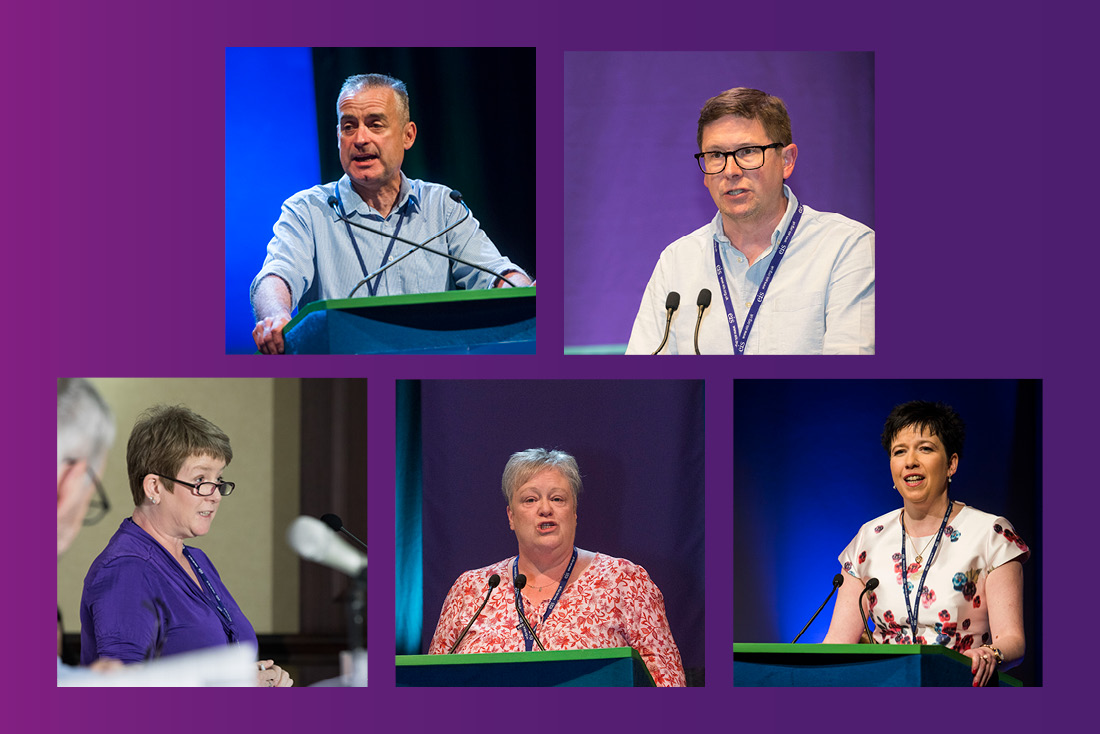
To coincide with November’s meeting of EIS Council, the EIS published the results of the national branch survey on violent and aggressive behaviour in schools. As we report in this SEJ, the findings were doubly troubling and must represent a stark warning to the Scottish Government and Scotland’s local authorities.
General Secretary Andrea Bradley reported the findings of the survey to Council, as part of her update on the latest developments in the Stand Up for Quality Education campaign. Ms Bradley said that the survey report would support campaigning at national, local and school level and would be used by the EIS to push for action to address members’ concerns over pupil behaviours.
Susan Quinn (Glasgow & Education Convener) said, “We need to be holding their (Scottish Government and COSLA) feet to the fire, at every opportunity, over the issues outlined in this report. We also need to consider the potential for ASOS (Action Short of Strike) and discuss how this might potentially be used, and what it might achieve, as part of this campaign.”
Nicola Dasgupta (East Ayrshire), said, “We also need to look at pupil to pupil violence, which is really escalating in our schools. It is disturbing for pupils, disturbing for staff, and has a massive detrimental impact on learning and teaching.”
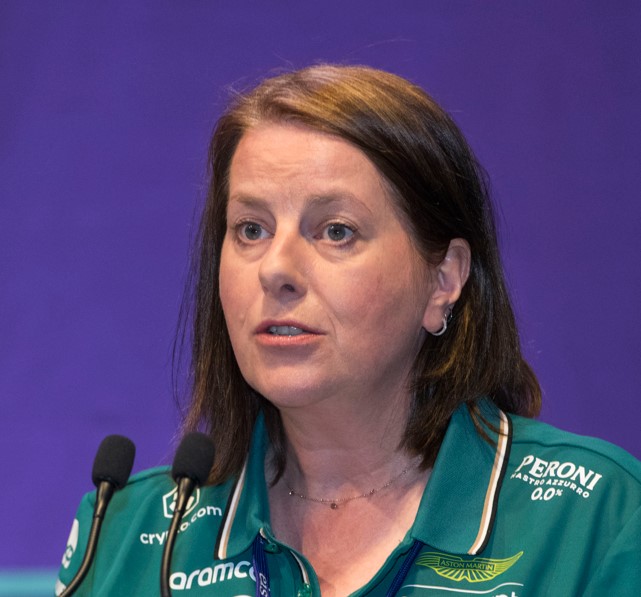
Claire Robertson (Edinburgh) said, “Work shouldn’t hurt, but it is hurting. It’s hurting us now, and too many teachers are off ill because of work-related stress linked to violence in schools.”
Ex-President Andrene Bamford said, “Society is broken. The fact is we have these young people who think nothing of being verbally and physically aggressive towards their teachers. We’ve got Head Teachers who are unable or feel unqualified to say to those parents and teachers that the behaviour is unacceptable.”
Employment Relations Convener Susan Slater had some practical suggestions: “In terms of risk assessments, they need to be in place. A risk assessment for the child needs to be in place but also, in some situations, a risk assessment for the member of staff needs to be in place.
“We have moved to electronic reporting. We’re still developing it. But Moray agreed to the forms coming in from the member of staff. They don’t go through the line manager. What it highlights to us is our Senior Leadership Teams don’t have the time or capacity to deal with this.”
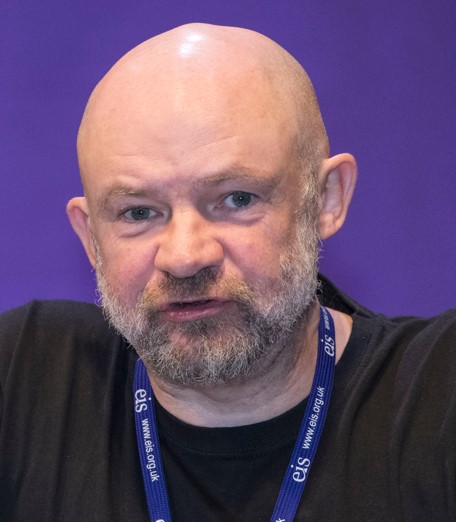
On the campaign itself, Adam Sutcliffe (Aberdeenshire) said, “I managed to get time on Friday to read through the whole report. What I would like to see in communications going out to LAs and members, is that this is a long-running campaign. This doesn’t all need to happen right away.”
This was echoed by Alison Murphy (Edinburgh), who said, “Give people reassurance that we’re not expecting everything all at once. It’s about what would make the most difference in your establishment or your authority. How can we support our Reps? Give them specific, targeted advice. I would also really welcome the chance to share best practice across Local Associations.”
And Vice-President Allan Crosbie added, “The Scottish Government can’t minimise the problem now, in the face of our survey. We have to be ready to counter their rhetoric, where they will attempt to downplay the issue. The Scottish Government can’t shirk responsibility, and they can’t place all the blame on Councils.”
Salaries Committee – future pay claim
With the final instalment (2%) of the last pay deal due to be applied to teacher salaries from January, the negotiation process for the next pay settlement, due to be applied from August, is set to begin.
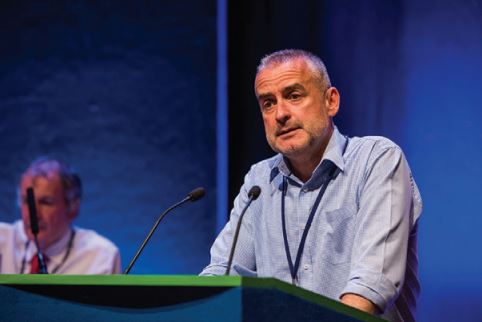
Outlining the process, Salaries Convener Des Morris said, “As a result of the last pay agreement, our settlement date has now changed to the 1st of August, and we are still due an uplift (2%) from the last pay settlement on 1 January of this year. Despite the change in settlement date, our schedule has not changed and the Teachers’ Side of the SNCT will submit our pay claim in January.”
There was significant discussion amongst Council members of how the Salaries Committee and Teachers’ Side of the SNCT should best approach the next Pay Claim and subsequent negotiations.
David Farmer (Fife), said, “At the last Salaries Committee meeting, one of the things that was clear, is that there was a clear consensus on the need for a significant pay claim this year. Prices are continuing to rise, and profiteering from major companies continues unabated.”
Susan Quinn (Glasgow) said, “The challenge we face is being both realistic and practical. But we also need to put in a claim that reflects the realities that our members continue to face.”
Glasgow colleague Andrew Fullwood added, “It is always a difficult decision where to pitch a pay claim. This is one of the most difficult decisions we will ever have to take – what will be a realistic claim that our members will back us and fight for. For example, is a more moderate claim, with guarantees on teacher numbers and other conditions, something we could fight for? It is massively important that we get this right.”
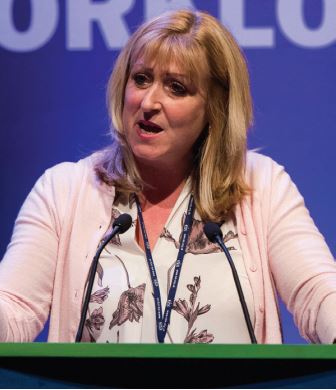
Heather Hughes (West Lothian) said, “We have previously committed to campaign for inflation plus in our pay settlement, and we must stick to that. We also have to remember that we are not long past action on pay, and we have to bear that in mind as we move forward with this pay claim. I am personally not in favour of tagging on conditions to pay – I think pay should be a standalone issue.”
Taking a similar stance, Valerie Inkster (Shetland) said, “I don’t think we should have any Terms & Conditions attached to a pay agreement. In the past we’ve had T&Cs attached and it has eroded and eroded to the point where we have nothing left to give.”
And Eddie Burns (South Lanarkshire) added, “We shouldn’t include conditions in a pay deal. We need to keep SU4QE separate from any pay campaign too. The reduction in contact shouldn’t be folded in. It’s already a manifesto commitment for the Scottish Government to deliver that.”
Highlighting the need to start building the next pay campaign, Nicola Fisher (Glasgow) said, “We need to lay the groundwork, and start building for this campaign. We have already seen the backlash from Scottish Government and COSLA who blame teacher pay on underfunding and cuts in other areas. We have to challenge the narrative that there is no money for anything, because it’s just not true.”
Adding a note of caution, Mark Smith (North Ayrshire) said, “The pay claim we put in has to be achievable. A significant number of members will not feel ready for another industrial action campaign so soon after the last one.”
Salaries Vice-Convener Mick Dolan (West Dunbartonshire) added, “In my view, conditions should never be tied in on pay. It is crucial that we have a sense of where the membership is – this is vital in determining where we go with our pay claim strategy.”
Having heard the views of Council, the EIS Salaries Committee was scheduled to meet in early December to agree the EIS pay claim. This will then be fed through the Teachers’ Side to the full SNCT in time for its next meeting in January. Further information will be circulated in due course.
Executive
Updating Council on staffing matters, Vice-President Allan Crosbie noted the imminent departure of Assistant Secretary Louise Wilson and the selection of current National Officer Stuart Brown as the next Assistant Secretary (Employment Relations). Mr Crosbie paid tribute to Ms Wilson and congratulated Mr Brown on his appointment.
Education Committee
Convener Susan Quinn noted that discussions continued on all aspects of planned education reforms, and highlighted that the EIS will continue to play an active role in all discussions over the shape of the planned new education bodies. Ms Quinn also highlighted the ongoing Behaviour Summits, chaired by the Cabinet Secretary, and the importance of teacher voice being heard in these discussions.
Employment Relations Committee
Convener Susan Slater updated Council on Benevolence issues, saying that 45 grants totalling £128,500 had been authorised at the Committee’s last meeting. On legal affairs, the Committee considered 31 cases and was pleased to note that a total of £413,625 had been achieved in settlements on behalf of six members.
Equality Committee
Convener Nicola Fisher told Council that the Committee had noted the publication of the Scottish Government consultation on RSHP Education in schools. Members of the Committee expressed numerous concerns over the document, including the lack of practical, meaningful support within the guidance, and the limited representation of family structures other than two parent nuclear families.
Motions
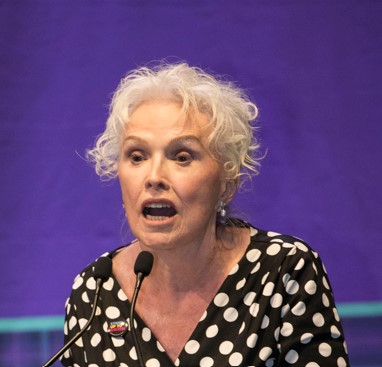
Three motions, all related to the current conflict in Israel/Palestine, were approved by Council.
The first, proposed by Penny Gower (EIS-FELA), called on support for Palestinian solidarity demonstrations, a call on the UK Government to cease arms sales to Israel, and for the EIS to sign a statement in solidarity with Palestinian Trade Unions.
Moving the motion, Ms Gower said, “I am speaking not just as an EIS Council member, but as a member of a Jewish family, when I say that what is happening in Gaza is not happening in our name. 15,000 civilians have been killed in Gaza, 6000 of them women, and 4000 of them children. The EIS supports a solution based on social justice – this is the only way that the fighting and killing will stop.”
In the second motion, Jehan Al-Azzawi (Edinburgh) was successful in her call for the EIS to donate £5000 to Medical Aid for Palestinians.
“The EIS long ago adopted the right moral stance in this dispute – this donation will be a tangible sign of our support for the people of Gaza”, said Ms Al-Azzawi. The speech received a standing ovation from Council, and the motion gained overwhelming support.
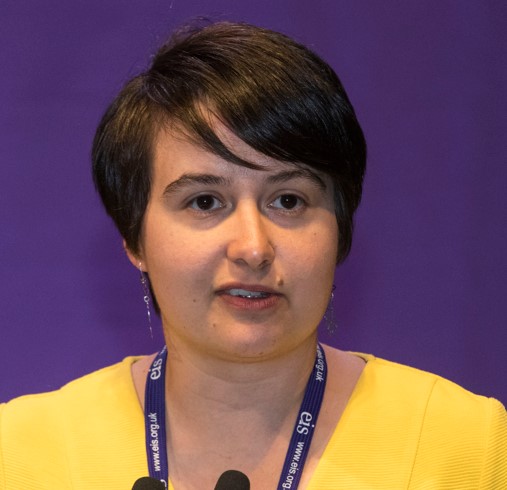
The third motion, again in the name of Jehan Al-Azzawi, successfully called for the EIS to contact all Directors of Education to ask them to support teachers in delivering lessons related to Israel and Palestine, and to cite the EIS Flexible Learning Resource (see more on p21 of this SEJ) as a useful means of supporting this important work.
“We need to fundamentally rethink how we educate our young people about war and peace. Our curriculum only really allows for learning about WW1 and WW2. It’s no longer sufficient to say I don’t know enough about it or it’s too complicated. The learning and teaching resources are available.”
